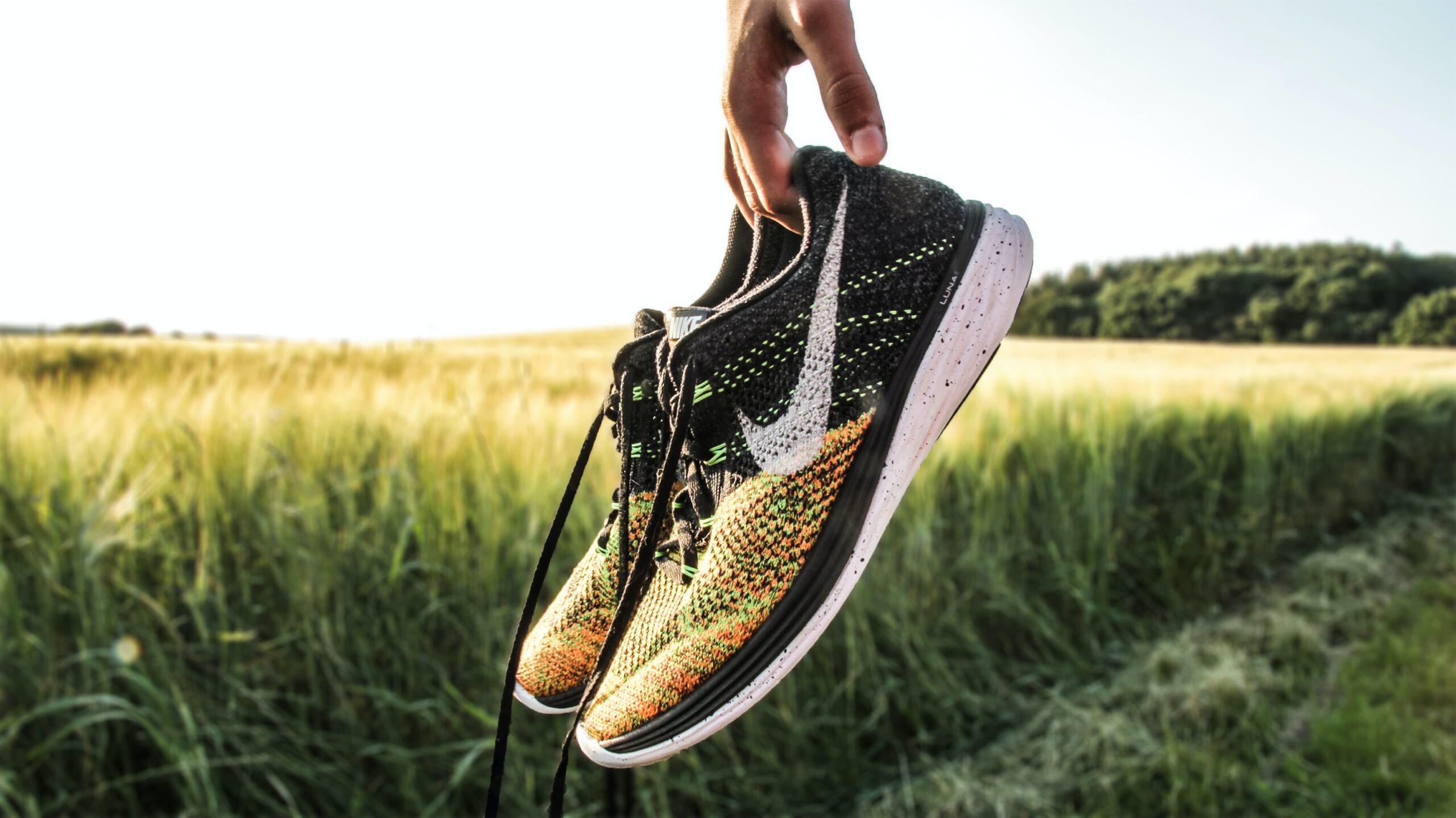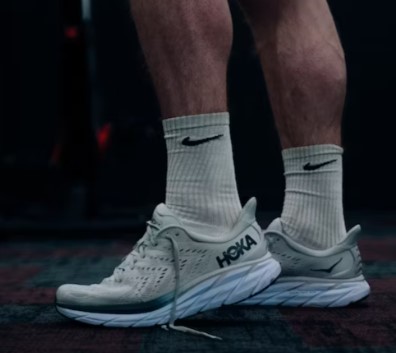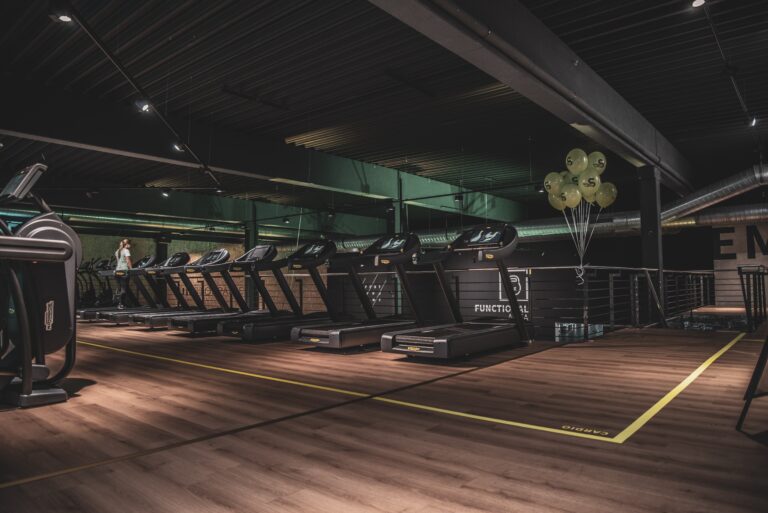How Should Trail Running Shoes Fit: A Comprehensive Guide

Trail running has increasingly gained popularity among fitness enthusiasts and nature lovers alike. Combining the benefits of traditional running with the added challenge and beauty of off-road terrain, it’s no surprise that more people are attracted to this exciting sport.
To make the experience as safe and enjoyable as possible, selecting the right trail running shoes is crucial, and one key aspect to consider is their fit.
When it comes to trail running shoes, fit plays a significant role in providing comfort and stability during runs. A proper fit ensures that the runner maintains good footing on uneven terrain, minimizes the risk of injury, and avoids discomfort that may hinder performance.
By understanding the nuances of how trail running shoes should fit, runners can make a more informed decision when purchasing their next pair.
To achieve the perfect fit for trail running shoes, it is essential to consider various aspects such as sizing, support, and adjustments that cater to individual preferences. A well-fitting shoe provides a comfortable and secure feel, allowing runners to tackle challenging terrain with confidence. Armed with this knowledge, let’s delve deeper into the factors that contribute to an ideal fit for trail running shoes.
Understanding Trail Running Shoe Fit
When selecting the ideal trail running shoe, it is crucial to consider the three main factors of fit: heel, midfoot, and toe box. These areas are critical in ensuring comfort, stability, and protection on the trails.
Heel Fit
A properly fitting heel will prevent blisters and slipping that could lead to discomfort or injury. To find the right heel fit:
- Snug but not tight: The shoe should hold the heel firmly in place without causing any pressure or pinching sensation.
- Adequate padding: Look for a shoe that offers adequate padding for a comfortable feel and shock absorption.
- Minimal lift: There should be little to no lifting in the heel when walking or running in the shoe.
Midfoot Security
Midfoot security is necessary for adequate support and stability on uneven terrain. A well-fitted midfoot will keep the foot in place without constriction. Key factors to consider include:
- Lacing system: Look for a shoe with a secure lacing system that keeps the midfoot locked in place.
- Arch support: Ensure the shoe provides support under the arch, maintaining natural foot alignment.
- No constriction: The shoe should snugly wrap the midfoot, but not constrict blood flow or cause numbness.
| Poor Fit | Ideal Fit |
|---|---|
| Excessive pressure | Firm but comfortable |
| Slipping foot | Locked-in midfoot |
| Lack of support | Structured arch support |
Toe Box Space
Adequate toe box space is essential in trail running shoes to prevent friction, discomfort, and blisters. Here are few considerations for toe box fit:
- Sufficient width: The shoe’s width should allow the toes to spread comfortably, increasing balance and stability.
- Extra length: Select a shoe size with a thumb’s width of extra space in front of the longest toe. This extra space accounts for swelling during longer runs and downhill segments.
- Prevent hotspots: Extra room in the toe box helps avoid hotspots caused by constant friction against the shoe material.
In conclusion, when choosing trail running shoes, prioritizing heel fit, midfoot security, and toe box space will result in a comfortable, protective, and supportive footwear experience. Careful consideration of these aspects can significantly enhance trail running performance and enjoyment.
Key Features of Trail Running Shoes
Cushioning
Trail running shoes offer various levels of cushioning, ranging from minimal to maximal. Minimal cushioning provides a more natural feel and better ground contact, while maximal cushioning offers more protection and shock absorption. Runners should choose cushioning based on their preference, running style, and the type of terrain they will be tackling.
Tread and Grip
The tread on trail running shoes is designed to provide excellent grip on a variety of terrains. There are different patterns for various surfaces, such as:
- Aggressive lug patterns for muddy, wet or loose trails
- Tighter, flatter patterns for rocky trails and mixed terrain
It is important to choose the appropriate tread for the specific terrain to ensure optimal grip and stability.
Toe Protection
Most trail running shoes feature some form of toe protection, usually a reinforced toe cap made of durable material like rubber or TPU. This protective layer protects the foot from accidentally kicking rocks, roots, or other trail obstacles. Toe protection is key for reducing the risk of injury and increasing overall foot comfort during a run.
Waterproofing
Some trail running shoes come with waterproof features, such as a GORE-TEX membrane. These can be beneficial in wet or muddy conditions, keeping the foot dry and comfortable.
However, waterproof shoes may be less breathable than non-waterproof alternatives, leading to a warmer, potentially less comfortable experience in dry conditions. Runners should weigh their need for waterproofing against their desired level of breathability when choosing trail running shoes.
The Importance of Socks in Fit
When discussing trail running shoes, socks play a crucial role in achieving the perfect fit. They not only contribute to comfort but also assist in preventing blisters and moisture buildup. Let’s dive into the various ways socks can impact the fit of trail running shoes and how to choose the right pair.
First and foremost, the thickness of the sock has a significant impact on fit. In general, trail running socks come in three main categories:
- Thin
- Medium
- Thick
Selecting the proper thickness depends on personal preference and the specific trail running shoe. Thin socks provide a lighter, more breathable feel, allowing for better ventilation, while thick socks offer additional cushioning and support. Experimenting with different sock thicknesses while trying on shoes can help achieve the perfect combination of fit and comfort.
Another aspect to consider is the material of the sock. It can greatly influence the overall performance and fit of trail running shoes. Some popular materials include:
- Merino wool
- Synthetic blends
- Bamboo
Of these, Merino wool is known to provide excellent moisture management, preventing blisters during long runs by wicking away sweat. Synthetic blends offer similar properties but may have slightly less odor control. Lastly, while bamboo is a more eco-friendly option, it is generally not as effective in moisture management for trail running.
The correct sock size is just as important as the shoe size. Ill-fitting socks can lead to friction and discomfort on the trails. Be sure to choose a pair that fits snugly but without restricting motion or circulation.
Lastly, the seams of the socks can influence the overall fit of trail running shoes. Look for socks with flat seams or seamless designs, as they can help to eliminate pressure points and potential sources of irritation.
In conclusion, don’t overlook the importance of socks when determining the fit of your trail running shoes. Finding the right combination of sock thickness, material, size, and design can lead to a more enjoyable, comfortable, and blister-free trail running experience.
Trying and Testing Shoes
When it comes to finding the perfect fit for trail running shoes, trying and testing different pairs is essential. This section will provide in-store fitting tips and home fitting strategies to ensure your shoes meet your needs and provide the proper support and comfort.
In-Store Fitting Tips
- Foot Measurement: Start by having your feet measured in the store, preferably later in the day when feet are slightly swollen. This helps to ensure you’re testing the correct size range.
- Socks: Wear the socks you plan to use for trail running, as this affects the shoe’s fit.
- Running Gait Analysis: Many stores offer a running gait analysis to help determine the appropriate level of support and pronation control needed in a shoe.
- Try Multiple Brands and Styles: Different brands and shoe models fit differently. Be open to testing various options.
- Walk and Run Test: Test shoes on the store’s treadmill or designated running area. This allows you to assess how the shoes feel during real trail-running conditions.
| Do | Don’t |
|---|---|
| Try on shoes at the end of the day | Assume your size is consistent across brands |
| Wear your running socks | Focus only on the shoe’s appearance |
Home Fitting Strategies
If you prefer to try on shoes at home or have purchased shoes online, consider the following home-fitting strategies:
- Proper Size: Ensure you’ve ordered the correct size or order multiple sizes to compare fits.
- Test on Multiple Surfaces: Test your shoes on different surfaces, such as carpet, hardwood, and tile, to mimic outdoor environments.
- Incline Tests: Perform incline tests (e.g., stepping on a wedge or ramp) to evaluate shoe stability and support on uneven terrain.
- Flexibility Test: Bend and twist the shoe to gauge its flexibility and responsiveness.
- Return Policy Familiarity: Be aware of the return policy for the shoes, in case they don’t fit well or meet your needs.
✅ Home Fitting Success:
- Test shoes on a variety of surfaces
- Pay close attention to how the shoe responds
- Don’t hesitate to make a return if the fit isn’t right
By following these in-store and at-home strategies, you’ll be well-equipped to find trail running shoes that fit perfectly and provide the support and comfort you need on your outdoor adventures.
Adjusting Fit During Use
When using trail running shoes, it’s essential to understand that your feet may change during a run due to swelling or other factors.
Therefore, adjusting the fit of your shoes during use is crucial for comfort and performance. This section will discuss lacing techniques and insole selection for achieving a comfortable fit throughout your run.
Lacing Techniques
Different lacing techniques can provide a more customized fit for your trail running shoes. Here are three techniques to consider:
- Loop lock lacing: This method creates a secure, snug fit around your ankle and prevents heel slipping. To achieve this technique, create a loop using the extra eyelets at the top of your shoe and lace through the loop to lock in your heel.
- Volume lacing: If you have narrower feet, volume lacing can help you get a better overall fit. Similarly, if you have wider feet, loosening the laces through the midfoot section can provide relief. This technique involves adjusting the tightness of each row of eyelets to create a more customized fit.
- Window lacing: If you experience pressure points or sensitive spots on your feet, consider window lacing. In this method, you skip an eyelet to create an open space (window) around the area of discomfort. This allows for reduced pressure on that particular spot.
Insole Selection
Insoles can play an integral role in enhancing the fit and comfort of your trail running shoes. Here, you’ll find several factors to consider when choosing insoles:
- Arch Support: It’s essential to determine your arch type (low, medium, or high) and select an insole that offers the right amount of support. Customized insoles can provide additional support tailored to your specific needs.
- Cushioning: Insoles vary in cushioning levels, so it’s important to decide how much cushioning you require. Thicker cushioning may provide more shock absorption, while a thinner cushion may allow for more ground feel and control during your run.
- Material: Various materials, such as foam, gel, or cork, are used in insoles. Each has its unique features and benefits, ranging from providing additional support, breathability, or odor control. Consider your preference and the conditions in which you’ll be running when selecting an insole material.
By practicing different lacing techniques and making mindful insole selections, you can adjust the fit of your trail running shoes during use and ensure a comfortable and enjoyable experience throughout your run.
Seasonal Considerations in Fit
When selecting trail running shoes, it is important to consider the season and weather conditions that you typically experience while running.
Different seasons require different levels of protection and support in your shoes. This section will briefly discuss summer, fall, winter, and spring considerations.
Summer
During the summer months, breathability is key. Look for shoes with lightweight, breathable materials such as mesh uppers. This will help to keep your feet cool and dry during hot and humid conditions. However, do not sacrifice durability or protection for breathability. A good balance is essential.
- Prioritize: Breathability, Lightweight, Durability
Fall
Fall trail running may involve wet and slippery conditions. Focus on shoes with good traction and a water-resistant upper to tackle muddy or wet trails. Additionally, quick-drying materials can make a difference in your overall comfort during a run.
- Prioritize: Traction, Water-resistance, Quick-drying
Winter
Winter trail running shoes should offer insulation and waterproofing to keep your feet warm and dry in snow and cold temperatures. Look for shoes with a GORE-TEX upper or equivalent waterproof technology. A more aggressive outsole with deep lugs can also provide additional traction on icy or slippery surfaces.
- Prioritize: Insulation, Waterproofing, Aggressive traction
Spring
Similar to fall, spring trail running often involves wet and muddy trails. Prioritize shoes with good traction and water-resistant uppers. In addition, a shoe with ample drainage features can help prevent water buildup inside the shoe, which can lead to uncomfortable blisters.
- Prioritize: Water-resistance, Drainage features, Traction
By considering the seasonal requirements of trail running shoes, you can make a more informed decision in selecting footwear that meets your specific needs. Remember, the ideal fit and appropriate shoe features will greatly enhance your trail running experience in any environment.
When to Replace Trail Running Shoes
Determining the right time to replace trail running shoes is crucial for maintaining proper support, traction, and comfort during runs. While the lifespan of shoes varies depending on factors such as the specific model, running style, and individual’s weight, a general rule of thumb is to replace them every 300-500 miles. Here are some key indicators that it might be time to invest in a new pair:
- Loss of Traction: The outsole of the shoes may experience noticeable wear, reducing its grip on the ground. Slipping or sliding while navigating through trails is a clear sign of degradation.
- Deformed Midsoles: Compressed or uneven midsoles can jeopardize the cushioning and stability of the shoes. If pressing on the midsole does not result in a slight bounce or the shoes tilt to one side when placed on a flat surface, it’s time for a change.
- Upper Material Deterioration: Regular trail running can cause wear and tear on the shoe’s upper. Visible damage, such as holes or frayed seams, might warrant a replacement.
- Unusual Aches and Pains: If the runner experiences discomfort in their feet, ankles, or knees after runs, it could indicate that their shoes are no longer providing adequate support.
To ensure the most accurate assessment of a shoe’s condition, runners should make a habit of regularly inspecting their footwear. By paying attention to these signs, they can maintain optimal performance and safety while trail running.






